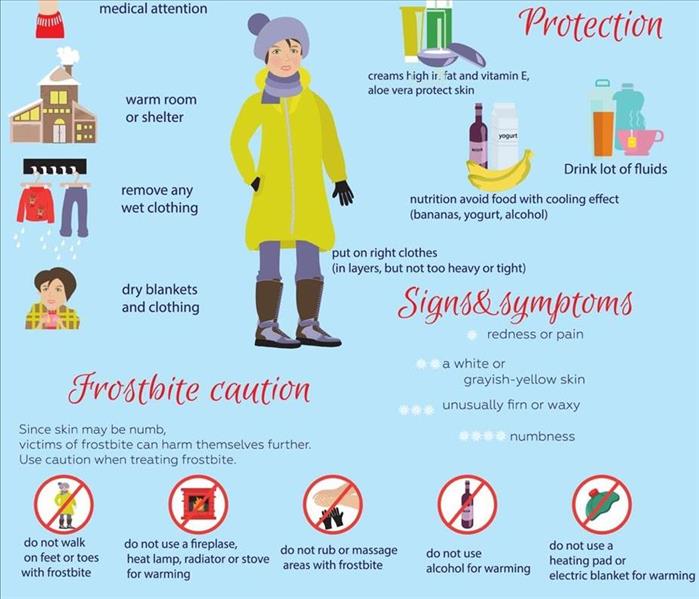Frostbite Stages and Treatments
2/14/2020 (Permalink)
Frostbite is very dangerous, and should be treated seriously. There are 3 stages of frostbite, and the appropriate treatment for each stage is different. The three different stages are:
Frostnip – Frostnip is a mild form of frostbite. Continued exposure leads to numbness in the affected area. As your skin warms you may feel pain and tingling. This type of frostbite doesn’t permanently damage the skin.
Superficial frostbite – Superficial frostbite appears as reddened skin that turns white or pale. The skin may begin to feel warm; this is a sign of serious skin involvement. If you decide to treat the frostbite with rewarming at this stage, the surface of your skin may appear splotchy. There also may be some stinging, burning, and swelling. Fluid-filled blisters may appear around 12-36hrs after rewarming.
Deep (severe) frostbite – When frostbite progresses, it affects all layers of the skin, including the tissue that lies below. The skin will turn white or a bluish gray, there could be numbness, and loss of sensation of cold, and there will be discomfort. The joints and or muscles may no longer work. Large blisters from 24-48hrs after rewarming. Afterward, the area turns black and hard, because the tissue has died.
When to see a doctor –
If you have any of these symptoms you should seek medical attention:
- Signs of superficial or deep frostbite
- Increased pain, swelling, redness or discharge in the area that was frostbitten
- Fever
- New, unexplained symptoms
If you have been affected by any of this, and are waiting for emergency medical or a doctor’s appointment, there are a few things you can do in the meantime.
- Protecting the affected area from further cold
- Not walking on frostbitten feet
- Reducing pain with ibuprofen
If you suspect hypothermia, get emergency medical help right away. Hypothermia is a condition where your body loses heat faster than it can be produced. Some of the symptoms include:
- Intense shivering
- Slurred speech
- Drowsiness and loss of coordination




 24/7 Emergency Service
24/7 Emergency Service
